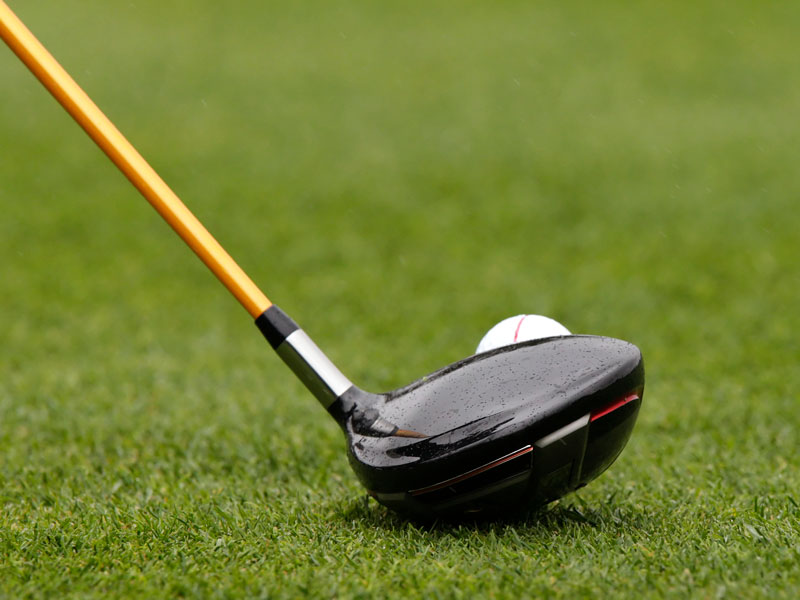Is The Golf Ball Really To Blame?

Our equipment expert discusses if the modern golf ball is travelling too far, if it has been made a scapegoat for golf's wider problems and if there is even an issue at all...

Is The Golf Ball Really To Blame?
The poor golf ball is taking flack again.
A tour pro shoots a good score at a historically significant venue and suddenly it becomes the cause of all of golf’s woes – specifically the scoring being too low and players hitting it too far with no regard for the heritage of this great game.
Shocking, right? I think not.
The round in question was Ross Fisher’s 61 at St Andrews’ Old Course during the Alfred Dunhill Links, which led Gary Player to come out and say the course had been “brought to its knees”.
Or to put it another way, a very good golfer played really well on an unusually calm day with soft greens and holed a lot of putts.
On the topic of the golf ball, or generally how we can somehow reduce the distance the ball is hit, the list of points for consideration is endless – this column would need 19 pages to cover them all.
Get the Golf Monthly Newsletter
Subscribe to the Golf Monthly newsletter to stay up to date with all the latest tour news, equipment news, reviews, head-to-heads and buyer’s guides from our team of experienced experts.
So I’ll make my take on why I think the golf ball is fine as it is as concise as possible.
Related: Golf Monthly gear reviews homepage
The basic arguments seem to be that scoring is getting easier through added distance, traditional golf courses are being made obsolete and modern courses are having to be made ludicrously long to cope.
This is utter guff, if you ask me.
The correlation between distance and scoring is an interesting one.
While the average driving distance on the PGA Tour has increased by 31 yards since 1985 (an average of less than 1% per year), the median scoring average has only gone from 71.9 in 1985 to 71 in 2016.

Additionally, longer drivers haven't necessarily earned more money.
In fact, only four of the top ten driving-distance leaders on the PGA Tour in 2016 were inside the top 30 on the money list, while four of the top ten driving-distance leaders were outside the top 50.
Perhaps more pertinently, why does the blame fall on the ball?
Yes, marginal performance improvements are regularly implemented, but this is the same across all categories.
Remember the design of a golf ball is still highly regulated in terms of size, weight and speed.
What about thinner, faster titanium faces on larger clubheads, with lighter, longer shafts propelling the ball even further?
Also, don’t forget that golf’s greatest practitioners are fitter and stronger now than ever.
Another point to consider is the length of grass on the fairways on tour.
Continues below
Expand Has Driving Distance On Tour Actually Increased?

Has Driving Distance On Tour Actually Increased?
We take a look at some stats and…
Expand How Far Do Average Golfers Actually Hit It?

How Far Do Average Golfers Actually Hit It?
These statistics show that average golfers probably aren't…
Expand Tiger Woods: “8000-Yard Golf Course Not Too Far Away”

Tiger Woods: “8000-Yard Golf Course Not Too Far Away”
Woods says 8,000-yard golf courses may be coming…
They are being mown shorter and shorter thanks to improved irrigation, denser grasses and enhanced mower technology, which makes the ball run out further after it lands.
So will longer courses curb better scoring?
Brooks Koepka blew that theory out of the water when he won last year’s US Open at Erin Hills on a layout that measured over 7,700 yards with a 16-under-par total, the joint most under par total in the event’s history.
That said, winning scores at the Majors haven’t drastically improved in the last few decades.
Augusta National looks to be planning to add more distance to the 13th hole, but wouldn’t longer rough be an easier way to protect a layout on which control into the lightning-fast greens is paramount?
If you reduce a ball’s performance for everyone, it would make golf harder and pace of play would increase – a big no no.
Reducing it just for tour pros would actually help the longer hitters even more as players would need to hit more drivers.
The biggest point to be made is that, as a golf fan, I love to see the pros hit the ball miles.
It’s entertaining, we’ll see more birdies and it’s part of their skill set that makes them the world’s best.
Smarter course set-ups for tour events – narrower, slower fairways and smaller greens, or reducing the shortest par 5 to a par 4 – could be the answer, but I like this great game just the way it is.
Joel Tadman's latest gear column taken from the February issue of Golf Monthly
Keep in touch with Golf Monthly on Facebook, Twitter and Instagram
-
 JM Eagle LA Championship Prize Money Payout 2025
JM Eagle LA Championship Prize Money Payout 2025The LPGA Tour heads to California for the JM Eagle LA Championship, where the largest prize money payout of the season so far is on the table
By Mike Hall
-
 Corales Puntacana Championship Prize Money Payout 2025
Corales Puntacana Championship Prize Money Payout 2025The PGA Tour’s latest opposite field event features an attractive prize money payout and some former champions in the field
By Mike Hall